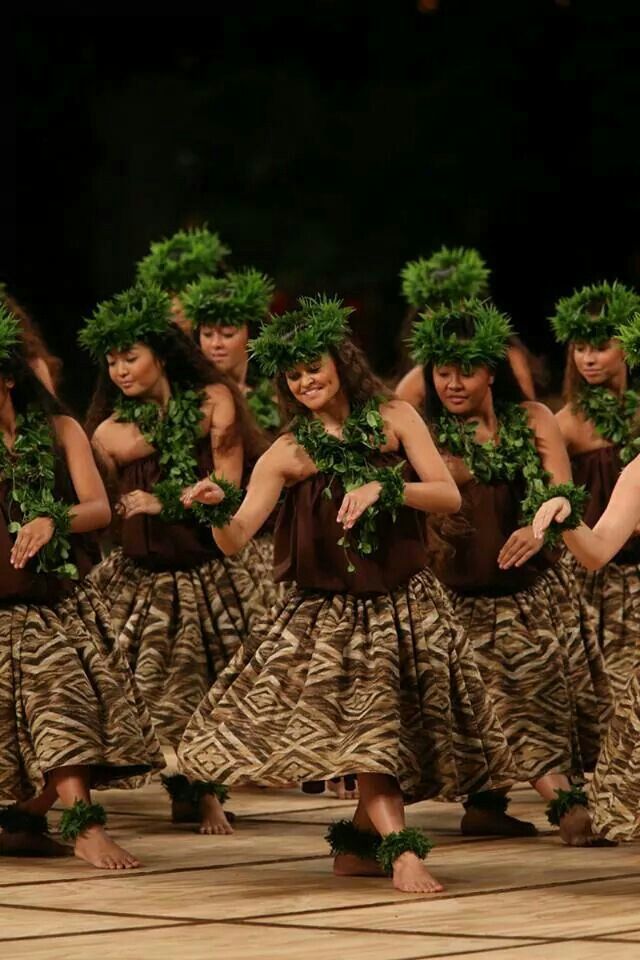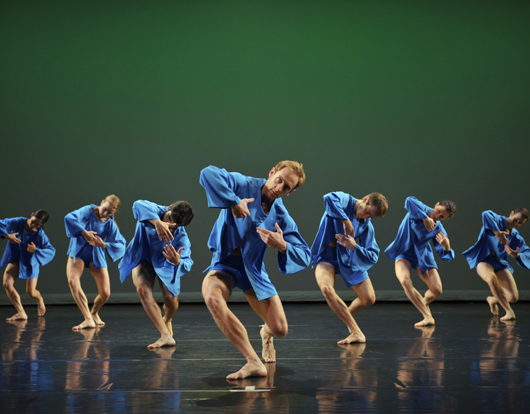How do you say dance in hawaiian
Hula Dance Terms | Aloha Allure Hula
Polynesian Dance Terms
A big thank you to: Kalani N. Poʻomaiahealani for researching and providing the following
1. ʻAi: dancing style or type
2. ʻAi ʻami: type of haʻa with little foot movement, hips revolve throughout the dance
3. ʻAi haʻa: hula step executed with bended knee
4. ʻAi kāwele, Kāwele: haʻa step; one foot makes a half circle forward and to the side without touching the floor; usually in combination with other steps as the holo or ʻuwehe; used in "A Koʻolau Au"
5. ʻAmi: rotation of hips in a circle
6. ʻAmiʻami, ʻAmi hula: jerking motion of the hips back and forth in a crude or vulgar manner
7. ʻʻAmi kāhela, ʻAmi poepoe: hip rotates with the weight on the right hip as the left heel lifts very slightly, then reversing this action
8. ʻAmi kūkū: like the ʻami kāhela except the revolutions are smaller, faster and in groups of three; sometimes combined with two slower kāhele revolutions
9.
10. ʻAmi ʻôniu (spinning): figure-eight haʻa step; the revolving hips (ʻami) form an "8" with the weight shifting
11. ʻAmi ʻōpū (stomach): ʻami haʻa step with the abdomen thrust forward, considered in poor taste
12. ʻAui: haʻa step where the dancer turns to the side and points the foot out once or several times, drawing the foot well back between each pointing; at the same time the body is tipped with the lowered hand pointing to the outpointing toes and the other hand raised in the opposite direction. In the hula "Kaulilua", this step is immediately executed upon the kahea "pa"
13. Hela: one foot is placed at about a 45 degree angle to the front/side with the weight on the opposite hip and the knees bent; the foot is then returned to the original position and the step is repeated with the other foot.
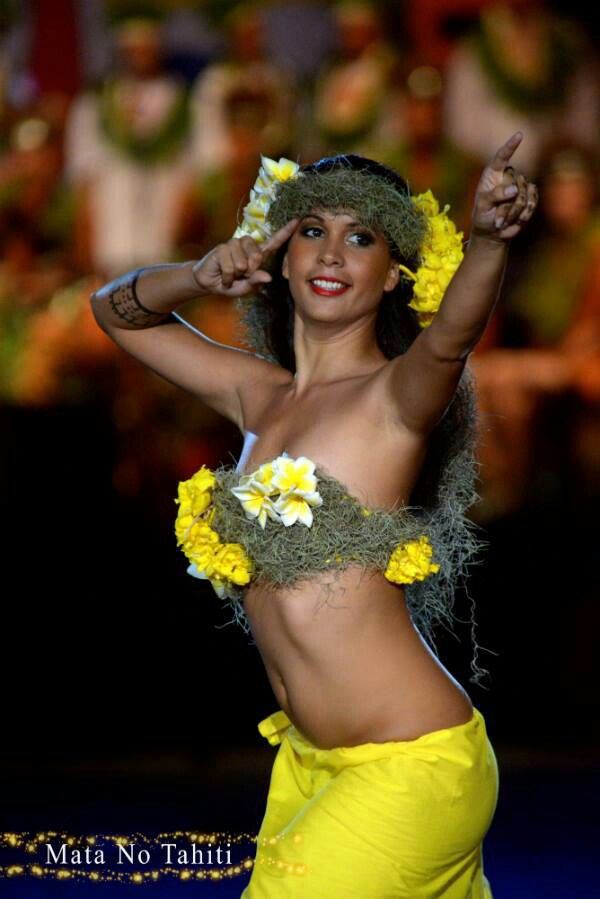
14. Holo: running holo step to the side, similar to kaholo except the feet are not necessarily brought together. Used in "Aua Ia I Kamapuaʻa"
15. Hue: revolving of the hips in time with the drummer, who beats as fast as possible, to see which dancer can dance the longest. Similar to ʻai ʻami and done at the end of the program
16. Kaʻapuni: haʻa step now called around the island; the dancer pivots on the ball of one foot in a complete circle; the other foot takes four or more steps to complete the circuit
17. Kāhele: Regular ʻami rotations. See ʻAmi kuku, Keʻehi #8
18. Kāholo: the haʻa vamp step, more common in modern than in ancient dances, consisting of 4 counts:#1 one foot is extended in a straight line to the side#2 the other foot is brought along side#3 first foot is again extended in a straight line to the side#4 the other foot is again brought along side the first foot
19.
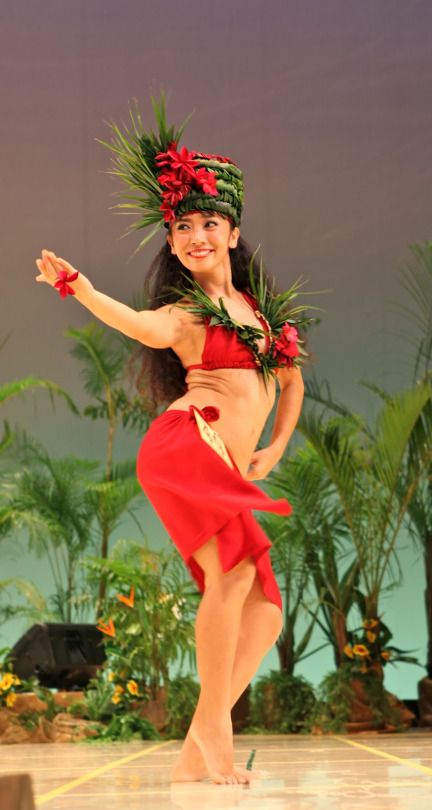 Kāwelu, Kalākaua: One foot taps time with the heel, the toes being stationary while the other foot, flat position, steps forward and back, the same distance, 2 or more times. The step is repeated, reversing the feet. This step is called Kalakaua in English because it was used to begin the haʻa hula dedicated to King David Kalākaua. Some halaus use the term kalākaua when this step is done in place to differentiate from kāwelu as the same step (front and back) that moves progressively to either side
Kāwelu, Kalākaua: One foot taps time with the heel, the toes being stationary while the other foot, flat position, steps forward and back, the same distance, 2 or more times. The step is repeated, reversing the feet. This step is called Kalakaua in English because it was used to begin the haʻa hula dedicated to King David Kalākaua. Some halaus use the term kalākaua when this step is done in place to differentiate from kāwelu as the same step (front and back) that moves progressively to either side 20. Kelamoku: hula step invented by Hawaiian sailors. One foot swings alternately on ball and heel of same foot while the other points the toes front and back four times, then reversed; knees are bent, arms out, bent at the elbows, with the hands held up and fingers often snapping while swaying the body
21. Kîʻi, Wāewae Kîʻi: right foot points to the side (3:00), front (1:00), back into position with the left foot. Left foot repeats the same movements, side (9:00), front (11:00), back into position, on the opposite side.
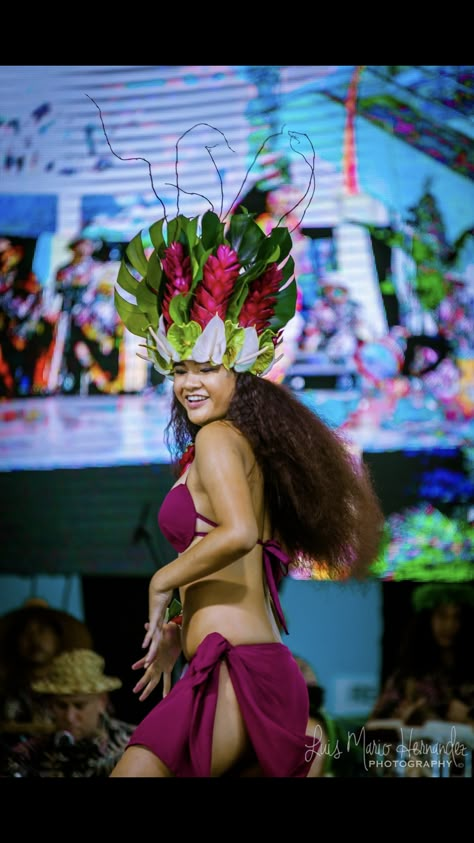 Some halaus incorporate an ʻuwehe when the 2 feet are back in the same position. This step is often used at the end of Olapa/Alaʻapapa dances. Legend says Hiʻiaka-i-ka-poli-o-Pele and Hopoe danced the hula on Puʻu Kiʻi, an islet at Ka-pueo-kahi harbor of Hana, Maui. It is said that this step was first danced here.
Some halaus incorporate an ʻuwehe when the 2 feet are back in the same position. This step is often used at the end of Olapa/Alaʻapapa dances. Legend says Hiʻiaka-i-ka-poli-o-Pele and Hopoe danced the hula on Puʻu Kiʻi, an islet at Ka-pueo-kahi harbor of Hana, Maui. It is said that this step was first danced here. 22. Lele: the dancer walks forward lifting the heel with each step, with a slight inward movement
23. Lele ʻUwehe: the ʻuwehe and lele steps are combined. Step with right foot, bringing the left foot to a hela position, bring left foot back into position beside right foot, then ʻuwehe. Repeat on other side
24. ʻO: The hip is thrust outward in a circular "O" movement; similar to the kawelu except the foot pivots while turning to the opposite direction
25. Ue, Uwe: haʻa step where the kahea: "e" imperative and "ue" is announced to the drummer and the beat is changed. The dancer extends the right foot forward with toes pointed, while both arms are brought forward to chest level with hands crossed and fingers tipped upward; the left hand stays up, while the right arm and foot swing back in an outward arc, ending with right foot pointing back.
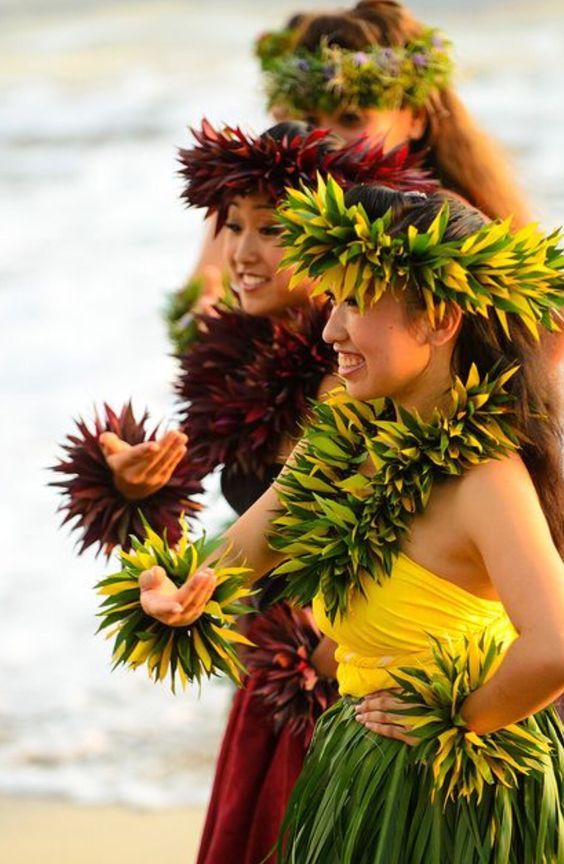 The right arm and foot are moved forward and the step is repeated to the left. Then three short steps are taken forward turning the body to the right. In the last movement, the left hand is forward and the right foot and arm are back. This step is often used to end pahu hula, i.e."Kaulilua"
The right arm and foot are moved forward and the step is repeated to the left. Then three short steps are taken forward turning the body to the right. In the last movement, the left hand is forward and the right foot and arm are back. This step is often used to end pahu hula, i.e."Kaulilua" 26. ʻUlili: similar to ʻuwehe except only one heel at a time is raised.
27. ʻUwehe, ʻuehe, ʻuweke: one foot is lifted with weight shifting to the opposite hip as that foot is "Uehe" lowered; both knees are then pushed forward by the quick raising of the heels, with continued swaying of the hips from side to side. The actions are then repeated in reverse. Step Names Not Found In the Dictionary The names of the following steps were probably derived from their actions. Each step is described and defined 27. 'Ai holoholo: same as #14 holo
28. Akalewa: sway the hips from one side to the otherDefinition: to sway the hips daintily and gracefully
29.
 Haʻanapu: sway the hips from side to sideDefinition: to sway as in a dance
Haʻanapu: sway the hips from side to sideDefinition: to sway as in a dance 30. Hehi: on the countDefinition: to stamp, tread, trample, step on, trampling #1 stamp the right foot while raising the left knee to slightly below the hip#2 stamp the heel of the same foot leaving the left knee raised#3 stamp the left foot while raising the right knee to slightly below the hip#4 stamp the heel of the same foot leaving the right knee raised
31. Kuʻi: hop onto the right foot moving to the right while bringing the left heel with the toes pointing to the extreme left, approximately 6" in front of the right knee being sure that the body doesn't bounce (isolate action to the legs). The hop is executed 4 times then repeated to the left. Note: a loud stomping sound is preferred when executing the hopsDefinition: 1. To pound, punch, strike; to beat out; to churn, 2.To join, stitch, sew, splice, united; joined; seam Hula kuʻi, any interpretive hula so called since the days of Kalakaua; literally, joined
32.
 Kuʻi Molokaʻi: similar to the kʻui except while hopping to the right as in the kuʻi, the left leg is thrust outward to the left, fully extended. After the 4th count to the right, repeat the movements to the left. Emphasize the stomping soundDefinition Molokaʻi: this dance (see hula kuʻi Molokaʻi) originated on the island of Molokaʻi
Kuʻi Molokaʻi: similar to the kʻui except while hopping to the right as in the kuʻi, the left leg is thrust outward to the left, fully extended. After the 4th count to the right, repeat the movements to the left. Emphasize the stomping soundDefinition Molokaʻi: this dance (see hula kuʻi Molokaʻi) originated on the island of Molokaʻi 33. Hilo Kuʻi: start by lightly touching the ground with the right foot in an alternating heel-toe movement. Starting with the heel and ending with the heel in 7 counts, with the foot returning to the starting posiion on the 8th count. When placing the heel, the toes need to be pointing to the right at a 45' angle. When placing the toes, the foot should be perpendicular to the ground with the heels now taking the extreme right position. All the while, the opposite foot bearing the entire body weight shuffles across the floor to the right, alternating heel and toes, also in an 8 count. However, on the 1st count, the left foot remains stationary and begins the shuffle on the 2nd count with the heel moving to the right first.
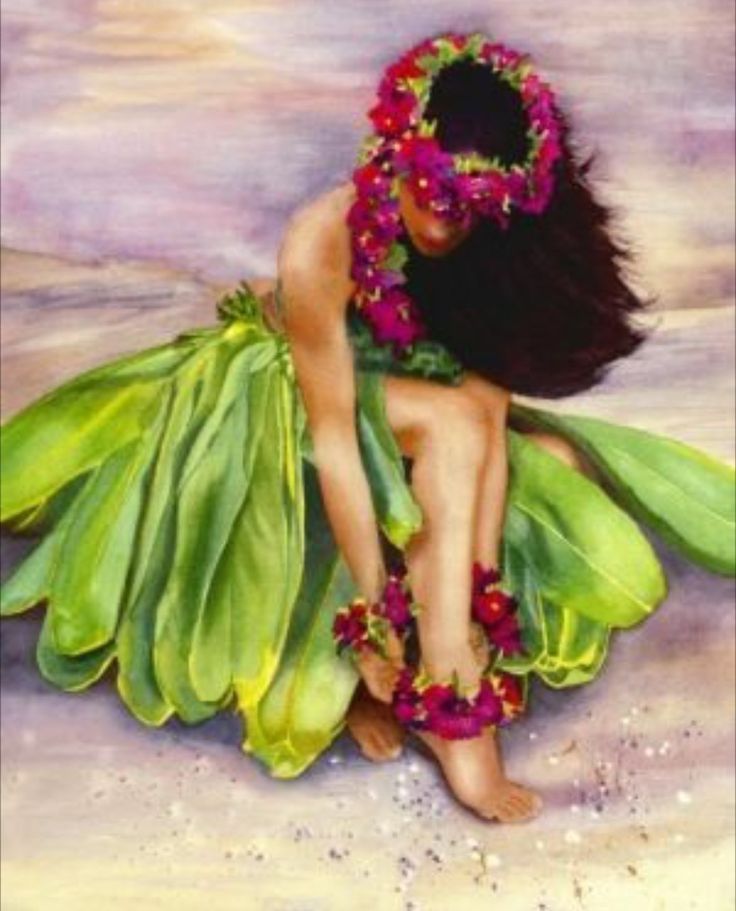 The shuffle is accomplished by placing all the weight of the body onto the ball of the left foot as the heel is moved to the right, then transferring the weight to the heel as the ball of the left foot is then moved the right. This movement is repeated until the right foot is returned to the starting positon on the 8th count. The entire process is now repeated in the opposite directionDefinition Hilo: to twist, braid, spin; twisted, braided
The shuffle is accomplished by placing all the weight of the body onto the ball of the left foot as the heel is moved to the right, then transferring the weight to the heel as the ball of the left foot is then moved the right. This movement is repeated until the right foot is returned to the starting positon on the 8th count. The entire process is now repeated in the opposite directionDefinition Hilo: to twist, braid, spin; twisted, braided 34. Kaholo Huli Hapahā: Quarter turn or holo/vamp step in a semi-circle. The name was coined by Kalani Poʻomaiahelani
35. Kiʻi Kuhi: To make time; keeping haʻa gestures with left hand gestures front and back; right hand taps ʻuliʻuli on lap Step Names with Unknown Origin
36. Hoʻoholo, Glide, Slide: kaholo hula step in excess of 2 counts; usually 3 or 4 counts
37. Kao: this step name is widely used but there is no origin for its usage or meaning for the wordUsage: sway side to side
38.
 Uleipahu: on the count of:#1 strike the ball of the right foot firmly on the floor#2 strike the heel of the same foot#3 strike the ball of the left foot firmly on the floor#4 strike the heel of the same foot Usage: may have come from the chant "Uleipahu I Ka Motu"
Uleipahu: on the count of:#1 strike the ball of the right foot firmly on the floor#2 strike the heel of the same foot#3 strike the ball of the left foot firmly on the floor#4 strike the heel of the same foot Usage: may have come from the chant "Uleipahu I Ka Motu" Hula Dance History in the Hawaiian Village
Honoring our hula heritage:
Next to aloha and Hawaii, perhaps no other Hawaiian word conjures more imagery of our beautiful islands and friendly people than hula. Kaipo Manoa, our Hawaiian Village manager or “chief,” explains more about our popular dance form.
“For many centuries past, our ancient dance form which we call hula kahiko, was learned and practiced almost entirely by men,” he said. “We continue to enjoy hula kahiko, which today is performed by both men and women, and is accompanied by drums, other Hawaiian percussion instruments, chants and vigorous motions — but not music.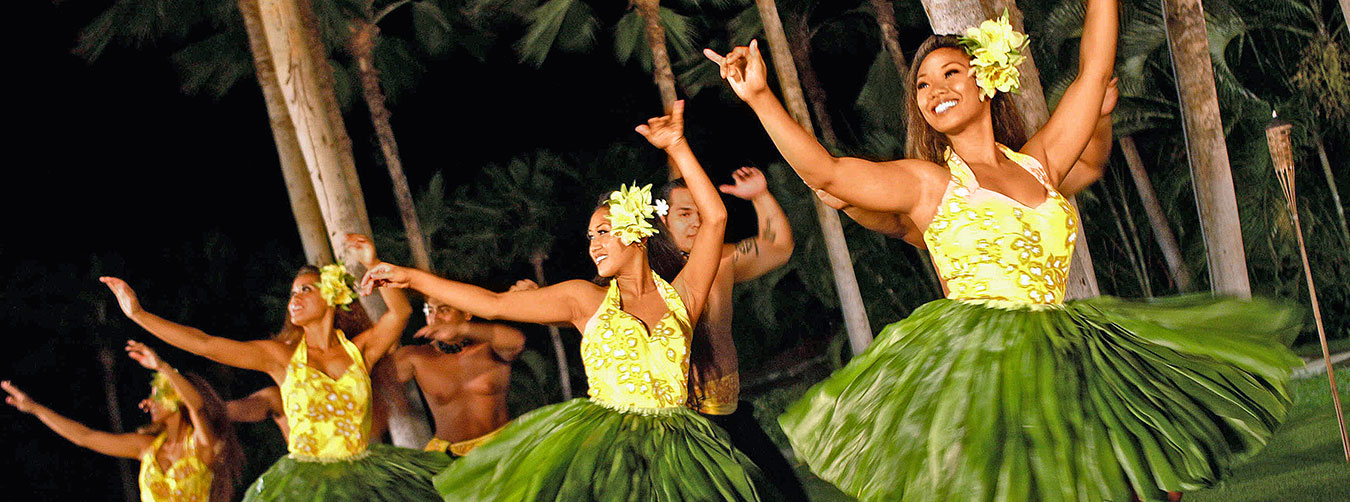
Manoa continued to explain many people today think of hula as what we call hula auana — the modern form of the dance that has evolved into graceful and colorful expressions of aloha performed by men, women, children and even kūpuna or elders. Hula auana dancers are often adorned with leis and other flowers, and dance to beautiful Hawaiian music. Many thousands of people around the world study hula auana. This is especially true in Hawaii, where keiki (kids) as young as 2-3 are learning how to hula.
Keiki or children dancers from the Laie-based Hālau Hula o Kekela, led by kumu hula Kela Miller, perform a sitting hula on January 17, 2015, in the PCC’s Hawaiian Village. (PCC photos by Mike Foley)
This was not always the case. When the Polynesian Cultural Center was preparing to open over 50 years ago, hundreds of college-age students at the Church College of Hawaii next door (which became BYU-Hawaii in 1974) had begun preparing to perform.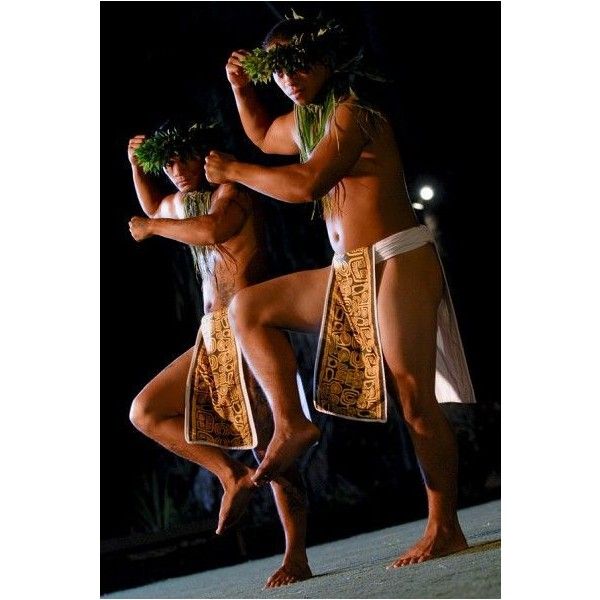
Aunty Sally Moanikeala Wood Naluai, a talented Hawaiian woman, became the PCC’s first kumu hula or teacher — a position she held until 1980, when she retired. However, she continued to consult for the Center until she passed away in 2000.
“I was around 13 years old in 1963 when Aunty Sally, my blood aunt, was asked to come out here and teach hula to all the college students who were dancing in the night show. I was still in high school, but she would use me as an alaka’i — a leader — to help her teach,” recalled Aunty Sunday Kekuaokalani Mariteragi, who with Aunty Sally’s urgings started her own hālau [school of knowledge] in Laie in 1981.
By 1983 Mariteragi was bringing her haumāna [students] to practice at the PCC so visitors could watch them learn hula; and in 1990, she championed establishing the Moanikeala Hula Festival at the Polynesian Cultural Center to honor her aunt. The event is now in its 25th year.
Mariteragi retired in 2012 after 42 years of working at nearby Kahuku High School as a P. E. teacher and student activities coordinator, “but I’m still here at PCC teaching hula to my haumāna, including my own grandchildren,” Mariteragi said. She quickly added she also considers all of her students and their parents as “my family. In fact, many of them are current PCC performers putting themselves through school. It’s an awesome thing to see the young people grow up and move forward in their lives.”
E. teacher and student activities coordinator, “but I’m still here at PCC teaching hula to my haumāna, including my own grandchildren,” Mariteragi said. She quickly added she also considers all of her students and their parents as “my family. In fact, many of them are current PCC performers putting themselves through school. It’s an awesome thing to see the young people grow up and move forward in their lives.”
“I want to thank the Hawaiian Village and Kaipo Manoa as well as my sister, Ellen Gay Dela Rosa, for ho’omau — continuing on — with this event in honor of Aunty Sally. We started in 1990, and I liked being back in the Hawaiian Village this year. It has been so warm and friendly.”
“To anyone interested in learning hula, I would say come, learn and enjoy. Whoever your teacher is, do exactly what they want you to do, and you’ll go far.”
In addition to Aunty Sunday’s Laie-based hālau, Napuananionapalionakoolau, other groups performing during the PCC’s 25th Moanikeala Hula Festival included the Hawaiian Villagers, a women’s group from Japan, a small male group of kahiko dancers led by La’akea Perry, and the Laie-based Halau Hula o Kekela, led by kumu hula Kela Miller.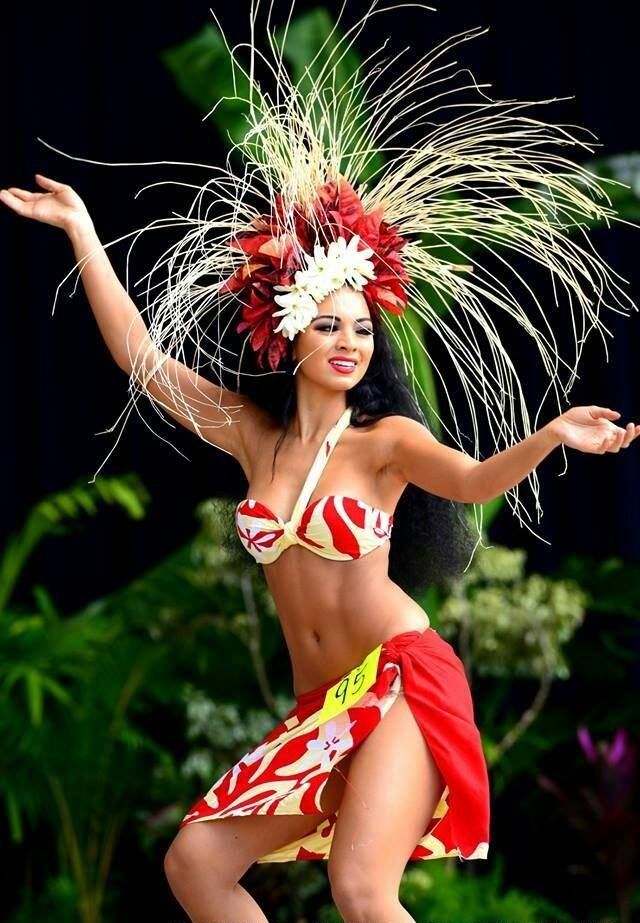
Some of the Hawaiian Villagers at the Polynesian Cultural Center
“Hula remains dear to us Hawaiians because it ties us to our history and to our kūpuna [ancestors],” Manoa said. “Hula defines us as a people. Within the stories of hula, we find out who we are as Hawaiians and why we do the things we do. Without hula, there would be no history, and without history, there would be no culture; and without culture, auwē, there would be no Hawaiians. That’s why we continue to perpetuate those things our ancestors have set up for us, things Hawaiian.”
“There’s a special spirit of aloha here in the Hawaiian Village,” Manoa said. “We know when they come here, our guests feel it. We’re delighted to share a little bit of our aloha with them.”
Sample some fresh poi:
One of the adventurous things you can do in our Hawaiian Village is sample freshly pounded poi — you’ve got to try it!
Poi is made by mashing the boiled or baked underground corm of the taro plant, which Hawaiians call kalo, and gradually mixing it with a little fresh water.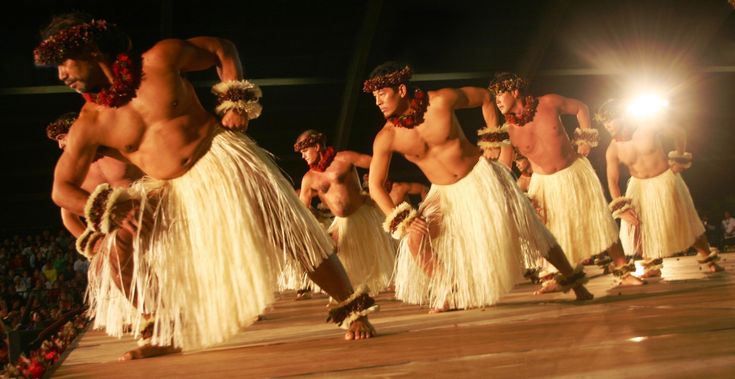 To this day, traditional Hawaiians use a stone poi pounder and a carved wooden board to produce poi.
To this day, traditional Hawaiians use a stone poi pounder and a carved wooden board to produce poi.
This starchy staple is loaded with vitamins and minerals, and was even used as an early, solid baby food for infants. Also, ancient Hawaiians discovered long ago that pasty poi could be preserved for much longer periods than plain cooked kalo.
Kaipo Manoa, our Hawaiian Village manager, says the poi tasting demonstration is one of the most popular parts for our guests to experience.
Volunteer Spencer Mauai helps make fresh poi in the PCC’s Hawaiian Village
Pound & take away your own poi: He explained the Hawaiian villagers make about two pounds of poi a day. “In the near future, however, we’re going to start letting guests pound their own poi, and when they’re finished, they get to eat it or take it with them. We tried this last year as part of our Lei Day celebration [on or near May 1], and it was a huge hit. I hadn’t seen so many people eating poi before in the village.
“Of course, I’m talking about pounding fresh poi, but for me, it depends on what I’m eating. If it’s poke [spiced-and-sliced raw fish], I like to eat it with fresh poi. If it’s dried ‘ōpelu [mackerel], I’ve got to have two-day-old sour poi with it
PCC’s Hawaiian cultural ambassador Naauao Panee also explained, “Our poi is made fresh every day. We pound it ourselves, so it’s a little different than what you get in restaurants and stores.”
“I like poi any way I can,” Panee continued, “but it also depends on what I’m eating with it. If I’m eating something really salty, I like sour poi,” that is poi that has aged for more than a day. “If I’m eating something spicy, I like fresh poi to add a little bit of sweetness. There are also different varieties of taro, some a little sweeter; but either way, poi is good.”
Of course, to each his or her own, especially when it comes to poi. For example, some people like to add salt, some put in sugar. Some mix in cream. Some people use a spoon to dip it, while others dig in Hawaiian style — with their fingers: One-finger poi is very thick and pasty, while thinner, smoother poi requires two- and three-fingers to scoop it up.
Some people use a spoon to dip it, while others dig in Hawaiian style — with their fingers: One-finger poi is very thick and pasty, while thinner, smoother poi requires two- and three-fingers to scoop it up.
Then there’s the whole aging thing: As Manoa suggested, poi begins to develop a bit of a kick after it’s sat for a day or two, so you’ll hear Hawaiians talk about eating one-day and two-day-old poi. One lady even said she had an older relative on the Big Island of Hawaii who would let his poi sit for seven days before eating it, until it started to bubble — but that’s definitely an acquired taste.
Okay, now that you know more about poi, you gotta’ come try some of the fresh kind in the PCC’s Hawaiian Village.
Story and pictures by Mike Foley
Mike Foley, who has worked off-and-on
at the Polynesian Cultural Center since
1968, has been a full-time freelance
writer and digital media specialist since
2002, and had a long career in marketing
communications and PR before that. He
He
learned to speak fluent Samoan as a
Mormon missionary before moving to Laie
in 1967 — still does, and he has traveled
extensively over the years throughout
Polynesia and other Pacific islands. Foley
is mostly retired now, but continues to
contribute to various PCC and other media.
who and why dances Hawaiian dances in Moscow - Moscow 24, 20.08.2014
Hawaiian hula dances are taught in Moscow
What kinds of dances are not taught in the capital: Spanish, Latin American, Irish, Indian ... And it is not easy to find teachers of Hawaiian hula dances - this type of dance art is almost not known in Moscow. The M24.ru correspondent found a Moscow school of Hawaiian dances and found out how easy it is to learn hula.
Moscow Hawaii
The road "to Hawaii" lies past Lavrushinsky Lane filled with tourists and the Tretyakov Gallery. I turn into Maly Tolmachevsky Lane, then into a quiet courtyard - and finally into the entrance of a two-story building with a sign "Spartak House of Sports and Tourism".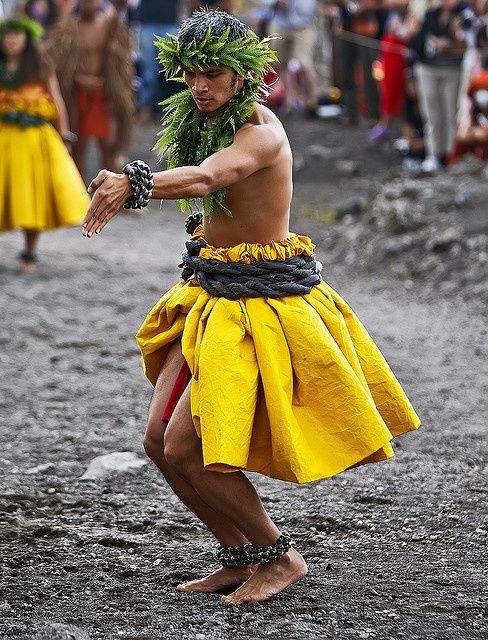 The corridor with dim lamps and photographs of football teams does not portend any exotic. On the second floor, the right door is distinguished from a number of dull neighbors only by a sticker - a palm tree and a dancer figurine. Yes, and two pairs of women's sandals are neatly attached next to the door.
The corridor with dim lamps and photographs of football teams does not portend any exotic. On the second floor, the right door is distinguished from a number of dull neighbors only by a sticker - a palm tree and a dancer figurine. Yes, and two pairs of women's sandals are neatly attached next to the door.
I open the door - and behind it there really seems to be another dimension. Rather, it looks like a mixture of a dance class and a greenhouse: a full-wall mirror, as it should be in a dance school, but there are potted plants in the corners, a wicker table and chairs, garlands of artificial flowers. And a barefoot woman in a bright skirt puts on makeup in front of a mirror. Anastasia, teacher of the Hawaiian hula dance school.
- It's like Hawaii here, - Nastya gestures around the room. - If it doesn't bother you, it's better to take off your shoes. Sit where you like best, I'll paint my eyes now ...
Photo: m24.ru/Alexander Avilov
Having finished with makeup, Anastasia sits on the floor, straightening her skirt, and begins to talk about how she took up an unusual task for a Muscovite - teaching Hawaiian dances.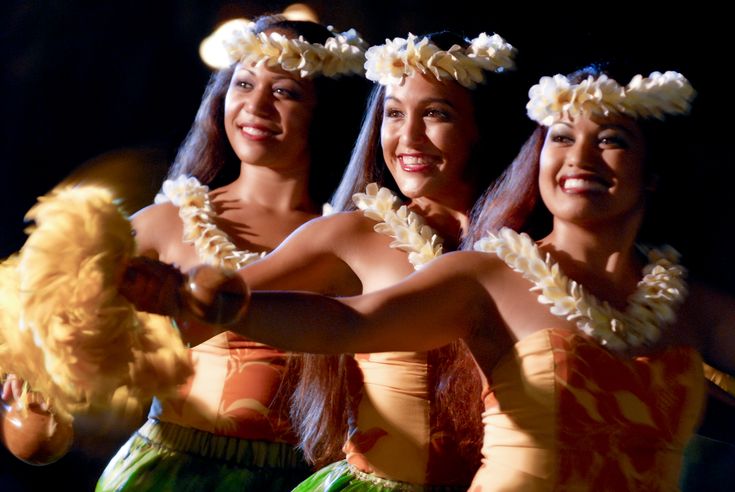 True, it is felt that it is much easier for her to dance a story than to tell. Still, the picture of events is gradually being restored.
True, it is felt that it is much easier for her to dance a story than to tell. Still, the picture of events is gradually being restored.
Nastya learned from her own experience that no special training is required for hula. In the past, she was engaged in things far from art: she was an entrepreneur, co-owner of a large company and earned money with passion. Money appeared, but something was still missing.
"I started looking for practices that would fill me with joyful energy, add fluidity, femininity," she explains. "I learned about Hawaiian dances at one of the trainings, then went to Hawaii with a group for a dance seminar" into a new culture. She talks about the islands with tenderness: the natives live in a completely different world, have kept in touch with nature, it’s even difficult for them to understand how poorly we understand our body. It is easier for Hawaiians to express emotions in dance, because they begin to learn dancing from the age of three. And this applies to all the inhabitants of the islands.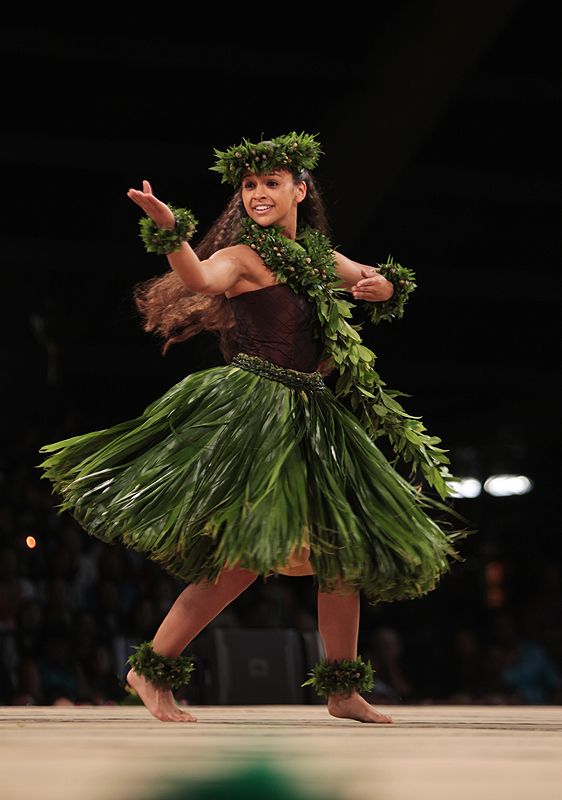 Hawaii is a dancing culture.
Hawaii is a dancing culture.
Photo: m24.ru/Alexander Avilov
"At that moment I realized: my level is enough to start teaching and somehow develop this direction in Moscow. A group of students gathered, we were able to invite teachers from the Hawaiian Islands here."
Anastasia herself cannot explain why people suddenly come up with the idea to engage in blasphemy, because this direction is not developed in Russia. Unless he specifies that many were inspired by the Disney cartoon "Lilo and Stitch": a story about a Hawaiian girl who manages to make friends with an alien.
But it turns out that the first students are still studying. Some even became instructors and also teach classes. One of these "old-timers", Sasha, is just pulling a Hawaiian skirt over a denim sundress. Sasha tells briefly about how she got into the group:
- A friend invited her to a dance festival, and there we saw blasphemy. Then she offered to go to work out - I went and stayed .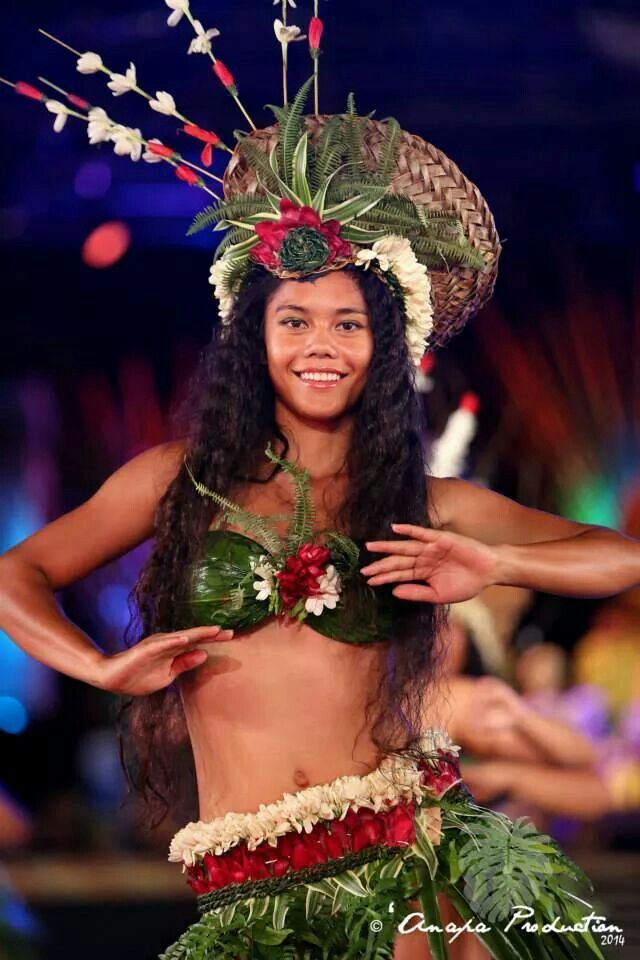 .. A friend, however, too.
.. A friend, however, too.
Sasha is an ordinary office worker, and she clearly lacked creativity. But now dancing has become a part of life, it remains only to save money and go to Hawaii. Of course, the master classes of Hawaiian teachers in Moscow are always an important event, but it’s more interesting to see everything on the spot!
Where do teachers come from
THERE ARE MANY DANCE SCHOOLS IN HAWAII AND EACH HAS THEIR OWN CHOREOGRAPHY CREATED BY THE TEACHER, KUMU. ANASTASIA'S OBJECTIVE IS TO TRANSMIT TO THE STUDENTS AS FULLY EXACTLY WHAT SHE LEARNS FROM THE TEACHER. WHEN A FAMOUS SONG IS SOUND AT HULA CONFERENCES, REPRESENTATIVES OF DIFFERENT SCHOOLS DANCE DIFFERENTLY, ALTHOUGH THE MOVEMENTS ARE SIMILAR
Anastasia found her hula teacher during her third trip to Hawaii. "I came for a month and a half, went to different seminars. I chose a school, went to classes every day, and in the evenings the teachers drove me home by car: it was late and they were worried about me.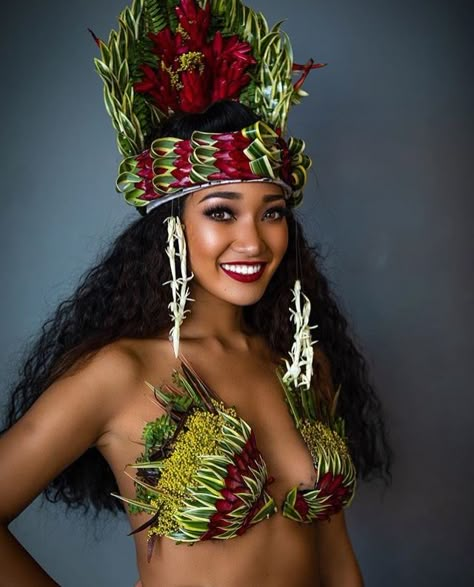 Once, returning to the hotel, I realized what exactly these people are close to me. And now they consider me a Russian daughter. After all, Hawaiians have a school like a family. In Hawaii, there is such a thing as "Ohana" - a family that includes not only blood relatives, but also friends, work colleagues."
Once, returning to the hotel, I realized what exactly these people are close to me. And now they consider me a Russian daughter. After all, Hawaiians have a school like a family. In Hawaii, there is such a thing as "Ohana" - a family that includes not only blood relatives, but also friends, work colleagues."
There are several steps leading to the "title" of a teacher, and Nastya is now at the first. In Hawaii it is called "Haumana" - "Student". Next will be "Olapa" - "Dancer". Then "Ho" opa "- the one who not only dances, but also sings and plays the instrument. Then either the teacher, "Kumu", or the teacher's assistant, "Alakai".
Photo: m24.ru/Alexander Avilov According to Nastya, hula has several levels: physical, emotional, energetic, spiritual... Beginners are not immediately told about all the secrets of the dance: teachers are waiting for the student to be ready: "A few years ago, when I asked Hawaiian teachers about something difficult like how the energy circulates during the dance, they pretended not to understand the question. And only then, gradually, they began to explain to me. "
And only then, gradually, they began to explain to me. "
When the student is ready to move on to the next level, he goes to the ceremony at the sacred place "Uniki", which is located in the center of Oahu. The name of this place is translated as "Sound from within", because in ancient times leaders were born there and the sound of drums, carried around the island, informed all the inhabitants about this.
Nastya had to participate in such a ceremony once, when she became "Hauman". And she had enough impressions: “Each participant of Unika had four assistants: two men and two women,” she recalls. “We had to bring living plants as a gift to the island, we bought them in advance in a supermarket. .First we received blessings from the male elders, then from Kumu and the female elders."
After this ceremony, Nastya received a Hawaiian name. However, she believes that she also received some kind of energy that helped her feel in a new way.
"My Hawaiian name is Kapuakeaokalani, it was given to me by my teacher Hokulani De Rego.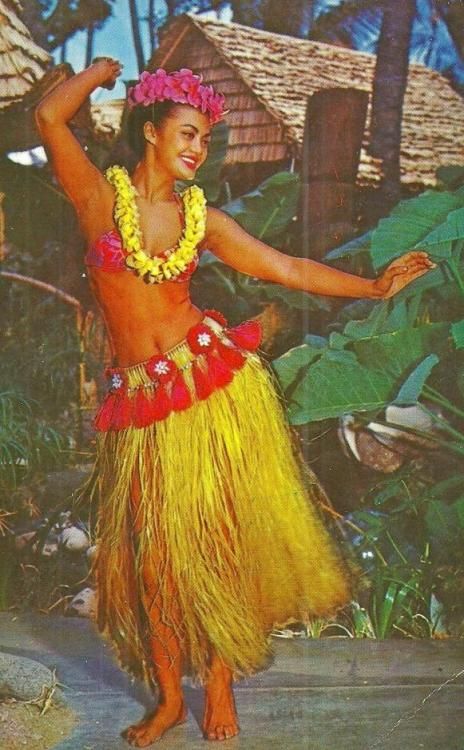 And the name of our school is translated as "White Delicate Flower". , there are women of Balzac's years.The only thing they have in common is bright skirts with flowers.0004
And the name of our school is translated as "White Delicate Flower". , there are women of Balzac's years.The only thing they have in common is bright skirts with flowers.0004
"We sew special Hawaiian pau skirts for gym classes," says Nastya. , making them wider and smoother. I bring the fabric from the Hawaiian Islands."
Photo: m24.ru/Alexander Avilov
For performances, girls also make grass skirts - raffia, to look more colorful. Grass is bought in florist shops. You can also use leis for decoration - flower garlands, the main symbol of the Hawaiian Islands. Lei made of artificial flowers are brought from Hawaii, but here you can also buy them or make them yourself.
The girls are just sorting out leis and flower hairpins. "Do you think a red flower will go with this skirt?" - heard from the corner.
"This is Stitch!" says one of the youngest students, taking a soft toy of a cartoon character from the shelf. "You watched the cartoon, didn't you?" Now I know exactly who was brought to class by the love of Disney cartoon products.
Flower garlands, skirts, hairpins, cosmetics, stuffed animals - the school seems to be 100% a realm for women.
"It's better for women to be taught by a woman, and men by a man," says Nastya. But he admits that he still plans to take several representatives of the stronger sex to school: he wants to put on a pair dance. When men perform the traditional hula to the drums, it is a special spectacle, unlike the flowing female dances. But modern dances with the participation of men are rather funny, comic.
TWO STYLES OF HULA
KAHIKO IS AN ANCIENT, TRADITIONAL STYLE OF HAWAIIAN DANCES, IT EXISTED BEFORE THE APPEARANCE OF EUROPEANS ON THE ISLANDS. DANCES ARE PERFORMED TO LIVE MUSIC OF TRADITIONAL INSTRUMENTS AND TO CHANTS. THE SONGS ARE DEDICATED TO EITHER AN APPEAL TO THE HIGHEST FORCES OR STORIES ABOUT RULERS.
THE MODERN STYLE IS CALLED AUANA, IT APPEARED NOT SO LONG LONG. BECAUSE IN THE 19TH CENTURY HULA WAS PROHIBITED, LIKE ALL TRADITIONAL CULTURE: NATIVES WERE FORBIDDEN TO SPEAK HAWAIIAN, WERE GIVEN AMERICAN NAMES… THE PROTESTANT MISSIONERS CONSIDERED THAT HULA IS Pagan and obscene dancing.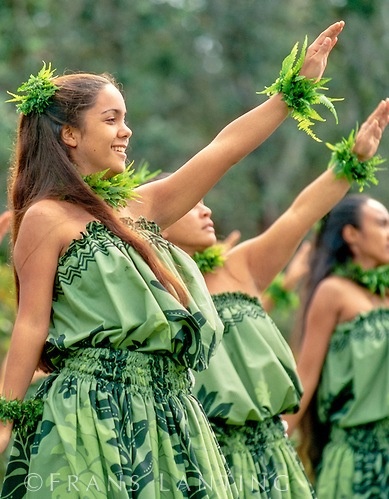 AND ONLY WITH THE COMING TO POWER OF KING KALAKAUA AT THE END OF THE 19TH CENTURY, EVERYTHING WAS REVIVED: HAWAIIAN LANGUAGE, SURFING, MARTIAL ARTS AND DANCES… THEY STARTED TO LOOK FOR THOSE WHO PRESERVED ANCIENT KNOWLEDGE, AND ON THE BASIS OF TRADITIONAL STYLE MIXED WITH MODERN CULTURE MODERN INSTRUMENTS, HAWAIIAN AND REGULAR GUITAR.
AND ONLY WITH THE COMING TO POWER OF KING KALAKAUA AT THE END OF THE 19TH CENTURY, EVERYTHING WAS REVIVED: HAWAIIAN LANGUAGE, SURFING, MARTIAL ARTS AND DANCES… THEY STARTED TO LOOK FOR THOSE WHO PRESERVED ANCIENT KNOWLEDGE, AND ON THE BASIS OF TRADITIONAL STYLE MIXED WITH MODERN CULTURE MODERN INSTRUMENTS, HAWAIIAN AND REGULAR GUITAR.
When Nastya starts talking about dances, you understand that men are really an extra element here: "In principle, choreographic preparation is not needed in hula, here 5 percent are movements and 95 percent are emotions. We dance a story. In most Hawaiian songs sung about the beauty of the island, about love, and we must convey these stories with the body."
Of course, there is a set of basic movements and steps. We can say that hula is a dance of the hips, which move naturally and smoothly, due to the transfer of body weight from one leg to another. And the hands at this time tell the story ..
Different hand movements - different images.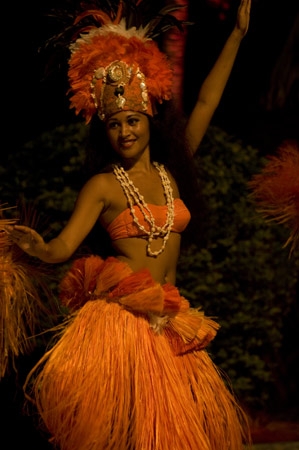 There is a sign language: "flower", "mountains", "rain", "waves". But learning gestures is half the battle, you also need to learn how to make them smoothly, fill them with your attention. Long, wide, smooth movements change the stereotype of perception. At some point, there is a feeling of unity with Nature and the images that the dance is dedicated to, you begin to feel like a part of something bigger.
There is a sign language: "flower", "mountains", "rain", "waves". But learning gestures is half the battle, you also need to learn how to make them smoothly, fill them with your attention. Long, wide, smooth movements change the stereotype of perception. At some point, there is a feeling of unity with Nature and the images that the dance is dedicated to, you begin to feel like a part of something bigger.
What are you dancing about?
Photo: m24.ru/Alexander Avilov
Finally, all the students have sorted out their accessories and are ready to dance something.
- Now we will show you a song about King David Kalakaua, - explains Nastya. - Well, the one who returned everything to the Hawaiians ... The song is called Kawika, everyone in Hawaii knows it.
A song is playing and the girls begin to sway gently, drawing something in the air with their hands. Since I don't know sign language, Nastya manages to "translate":
"This is David, the greatest of all flowers
He is that sun, that Light that rises in the east and illuminates all of Hawaii. .."
.."
And so on. However, there are few words in the Hawaiian song - probably because each word has some hidden meaning.
LANGUAGE AND MEANING
DUE TO THE LONG BAN ON EVERYTHING TRADITIONAL, FEW HAWAIIANS KNOW THEIR LANGUAGE WELL. MOST OFTEN THEY SPEAK ENGLISH BUT INCLUDE A LOT OF LOCAL WORDS IN THEIR SPEECH. FOR EXAMPLE, THEY WILL NEVER SAY "FLOWER", THE FLOWER FOR THEM IS "PUA".
THE HAWAIIAN LANGUAGE IS ONLY 12 LETTERS, 5 VOWS AND 7 CONSONANTS. WORDS NEVER END IN A CONSENT, SO THE LANGUAGE IS VERY MELODIOUS. EVERY WORD HAS SEVERAL LEVELS OF MEANING. THEREFORE LITERAL TRANSLATION OF THE SONGS DOES NOT REFLECT THEIR ESSENCE, AND THE LIVING TRADITION OF KNOWLEDGE TRANSFER FROM TEACHER TO STUDENT IS VERY IMPORTANT. "THAT THE SONG SEEMS ABOUT FLOWERS, - Nastya explains. - BUT FLOWERS SYMBOLIZE PEOPLE. IF THE SONG IS ABOUT LEI, THEN LEIA IS A FAVORITE PERSON. EVERYONE'S".
To demonstrate the layering of Hawaiian words, the girls perform a few more songs, but not related to the royal dynasty. One is about a wonderful evening, and it is sung about the fact that the wind knows no boundaries, but it knows where the beloved is. Another song "My beautiful lei" - at first glance it is about garlands, but in fact it is also about a loved one. In general, no matter how you dance, everything comes out about love.
One is about a wonderful evening, and it is sung about the fact that the wind knows no boundaries, but it knows where the beloved is. Another song "My beautiful lei" - at first glance it is about garlands, but in fact it is also about a loved one. In general, no matter how you dance, everything comes out about love.
How and where in Moscow they teach Hawaiian dances
Then Nastya offers to show a traditional song to be performed to live music. After all, the girls have already begun to master ipu - drums that are made from pumpkins. Ipu lie in the corner of the room, attracting the eye with their unusual shape.
- Shall we arrange an orphan's choir? Sasha asks skeptically. But all the same, he takes a piece of paper with the text of the chant and begins to repeat the Hawaiian words.
- Just need to check if the ill-wishers of our work have left the first floor, - recalls Nastya. The space under the dance class is rented by an office, and its employees are very nervous if someone starts beating drums from above.
It turns out that the office workers in the field and categorically object to the performance of the traditional hula with drum sound accompaniment.
- All right, but we learned the words, - the girls react with pure Hawaiian serenity. And as a consolation, they show me a song about surfing from their favorite "Lilo and Stitch".
"There is nothing like sliding on the ocean on my board…"
- What is the hidden meaning of this song? - already taught by experience, I'm interested.
- Nothing! Nastya laughs. – Everything is simple here: surfing is surfing. But this is a corporate hit! If we are invited to perform at some party, and we see that the audience is drinking, we always show a dance about surfing. Guaranteed success!
HULA AND PSYCHOLOGY
IN THE FIRST LESSONS YOU HAVE TO TEACH GIRLS TO RELAX THE HIPS AND COORDINATE THE MOVEMENTS OF THE HANDS AND LEGS IN THE FIRST LESSONS. “In teaching, I was helped by the fact that I received a diploma of the dance-motor therapist,” Nastya believes.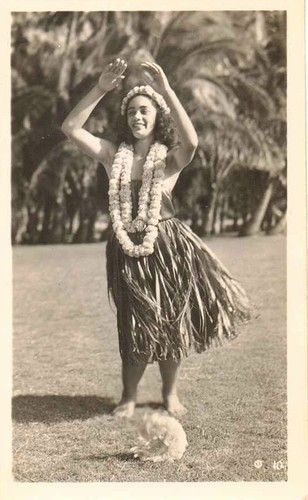 “In my thesis, I considered blasphemy as a resource-oriented method of dance therapy. And we tried to explore various aspects of femininity through the dance: we put dancing dancing ABOUT THE GODDESS OF FIRE AND WAKE UP THIS FIRE, THEN CHOOSE A SOFTER, FEMININE DANCE. HULA HELPS TO GET INTO CONTACT WITH YOURSELF"
“In my thesis, I considered blasphemy as a resource-oriented method of dance therapy. And we tried to explore various aspects of femininity through the dance: we put dancing dancing ABOUT THE GODDESS OF FIRE AND WAKE UP THIS FIRE, THEN CHOOSE A SOFTER, FEMININE DANCE. HULA HELPS TO GET INTO CONTACT WITH YOURSELF"
Finally, I ask Nastya, did any of her students manage to get rid of any psychological problems with the help of hula? After all, she, as a dance therapist, certainly put her knowledge into practice!
- Of course, the classes help to loosen up, relax, become happier, - Nastya, thoughtfully, fiddling with her flower necklace. – But it seems to me that a very anxious or squeezed person simply will not get to us. Those who focus on negative emotions are not ready to look for something new...
Indeed, in order to change something in your life, you must first stock up on a good mood and believe in the best. And then you can go even to a dance class, even to Hawaii!
Anna Makarova
tourism read dance schools Hawaiian hula dances
Learn Hawaiian dances in St.
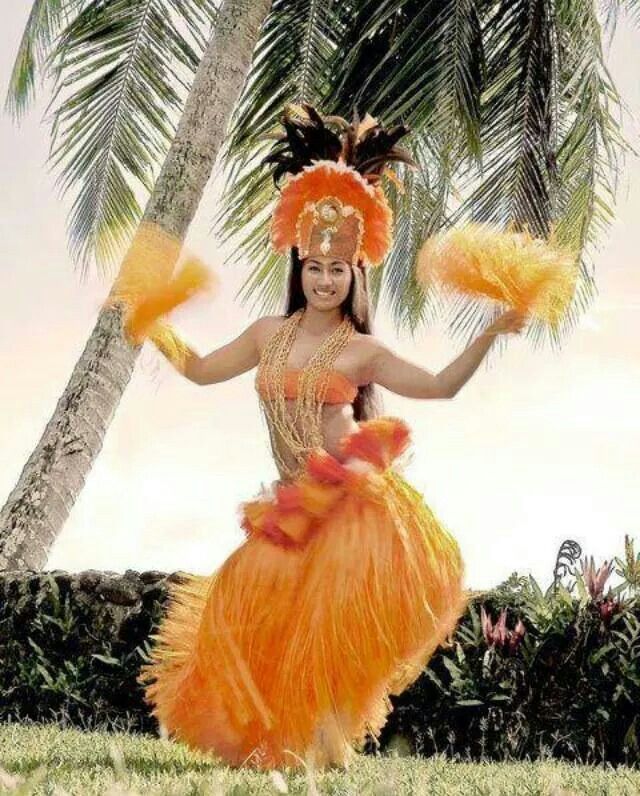 Petersburg: prices, reviews and addresses
Petersburg: prices, reviews and addresses Hawaiian dances - prices and reviews. Comparative table of dance schools in St. Petersburg, where there is a Hawaiian dance training service for children and adults.
Service:
Location:
Show
changes
Show map
The portal Dance.Firmika.ru contains information about Hawaiian dances in St. Petersburg: addresses and phone numbers of schools, prices for one-time classes and full subscriptions, reviews of students from various studios. Thus, each visitor will be able to choose the perfect option for all their wishes! For greater convenience, a search by metro stations and city districts is presented.
Hawaiian dances: simple movements with deep meaning
There are many dance styles taught in St. Petersburg: Irish, Indian, Arabic, but to find Hawaiian dance teachers, you have to try. Hawaiian dances are not yet widespread enough in our country, but in recent years this hobby has been gaining momentum.
Hawaiian dances are not yet widespread enough in our country, but in recent years this hobby has been gaining momentum.
Types of Hawaiian dances
Hawaiian dance, hula, has two main varieties:
- Kahiko, or traditional style. These are dances that originated in the Hawaiian Islands in ancient times, even before the arrival of Europeans there. Kahiko are performed accompanied by live music and national chants.
- Auana is a modern style of hula. At the end of the 19th century, the traditional style mixed with European culture, and a new trend of Hawaiian dances emerged using modern musical instruments.
In the Hawaiian kahiko style, both men and women dance, while the auana is a female dance, and the participation of men in it is more of a funny and comical character.
How are Hawaiian dances performed?
No choreographic training is required to start hula dancing. Hawaiian dance is a kind of storytelling. With the help of smooth movements of the hips and hands, the dancer tells about what the song is about: the beauty of the Hawaiian Islands, love, fidelity.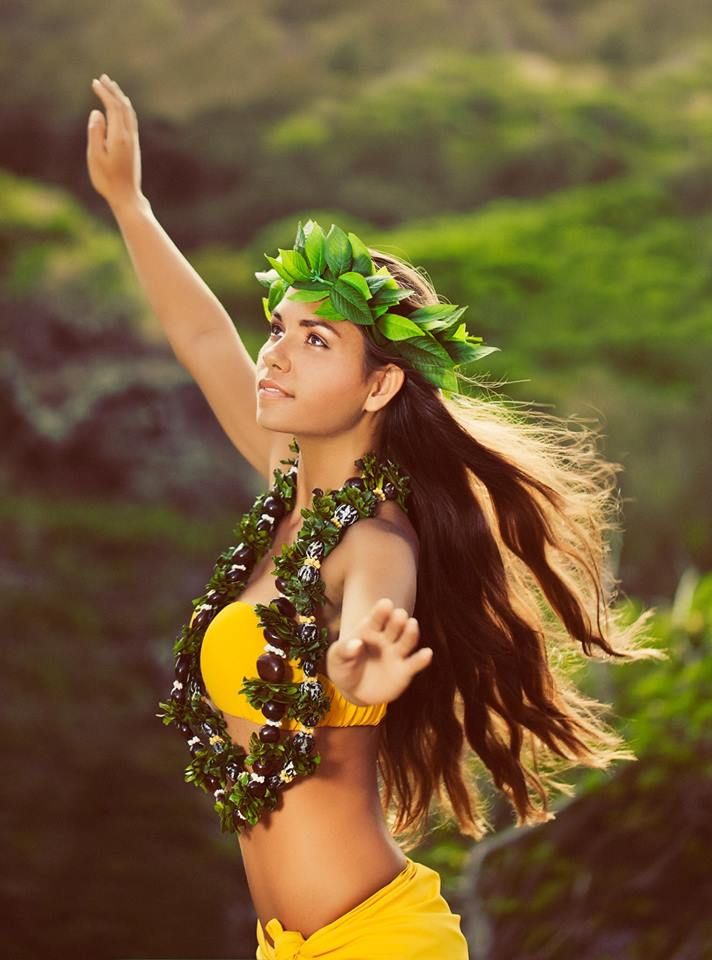
Each image corresponds to a certain hand movement: waves, the sun, a flower, mountains - all this can be depicted in the dance with the language of gestures. There is also a basic set of steps and movements. But just learning gestures and movements is not enough, you need to do them softly and smoothly, and fill the dance with emotions and experiences.
Why is hula useful?
Despite the apparent uncomplicatedness and simplicity of the dance, teaching hula has many useful points:
- Relaxation. Movement helps to relax the muscles of the pelvis, improve blood circulation, teach balance and balance - both physical and internal.
- Emotional release. Hawaiian songs are almost completely devoid of sadness. They glorify nature, life, love, native lands. Telling these stories with movements, the dancer smiles and fills the performance with positive emotions. Hula gives a boost of energy, fills the dancer with love and joy.
- Development of femininity.
 Gentle music, beautiful outfit, flowers in the hair - all this helps to feel more attractive and take a fresh look at the world.
Gentle music, beautiful outfit, flowers in the hair - all this helps to feel more attractive and take a fresh look at the world. - Teaches you how to express your emotions. Losing feelings in the dance, a person becomes softer and freed from psychological clamps.
And of course, hula is just a beautiful and attractive dance, which is a real pleasure to do.
Where to study and what to take with you?
There are several studios in St. Petersburg offering Hawaiian dance lessons for children and adults. When choosing a school, the main thing you should pay attention to is the professional training of the teacher. It is important that he be trained by a native Hawaiian or a hula master (Kumu Hula). It is believed that this is the only way to convey the correct ideas about the dance.
Classes are held in special Hawaiian pau skirts, which are a large piece of fabric gathered with an elastic band. Hulu is danced barefoot, so no extra shoes are required.